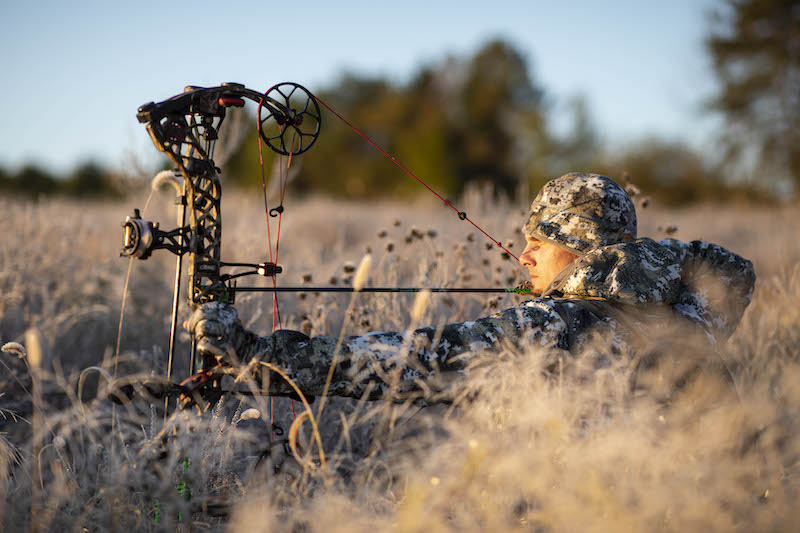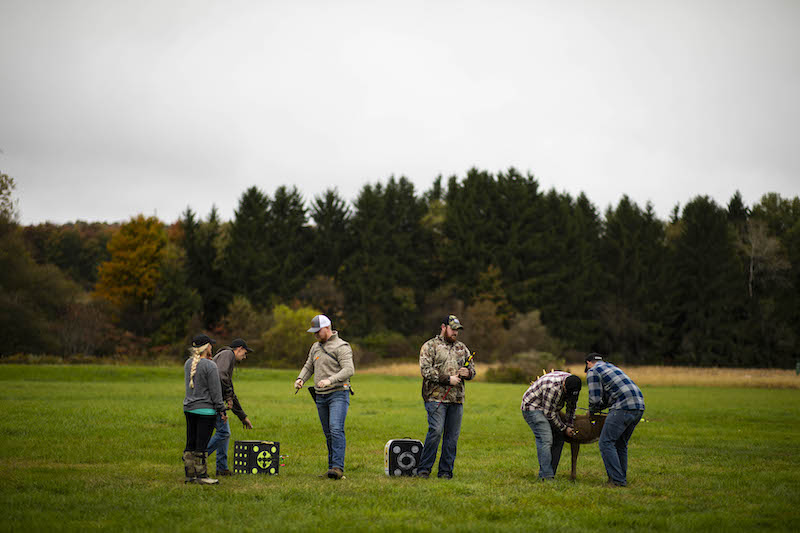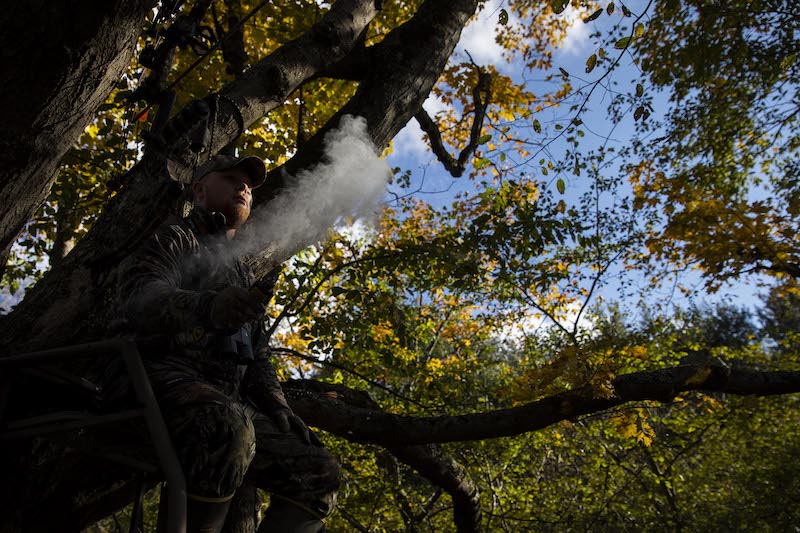Is 15 Yards an Easy Shot Archery
Some people have incredible archery skills. They can hit targets 80 or even 100 yards away! But would they dream of shooting at a whitetail at those distances? Not likely.
Not to discredit gun-hunters, but nearly anyone can take a zeroed rifle and routinely hit bull's-eyes at moderate distances with little instruction. Consistently shooting bull's-eyes with a "stick and string" requires much more practice.
One great thing about bowhunting is its solitary nature. It's usually just you alone with nature. To determine your effective shooting range, realize that this, too, varies by individual. Some folks practice more, or perhaps have more raw talent than others. If your hunting buddies boast of bow-killing deer at 50 yards, don't succumb to peer pressure. When you're the one shooting, you must decide your confidence level and how far is too far. Your buddies' skills or opinions don't matter.
Your effective range depends on several factors, which can change under different conditions. Two factors ultimately determine how far you can ethically shoot at live targets: how much you practice, and if your gut tells you to shoot or pass at the critical moment.
Know Your Bow

Make sure your bow meets the draw weight for hunting requirements in your area. Photo Credit: ATA
Your gear is a key component in determining your ethical shooting range. A good bow in competent hands can accurately launch arrows a long way. If you want to get technical and discuss brace-height forgiveness, bows with longer brace heights arguably "forgive" more shooting-form imperfections than those with shorter brace heights.
What isn't debatable is that your bow and its accessories must be in balance and properly set up. Good archery shops can help. No matter which bow you choose, it should shoot accurately and feel good in your hands.
Sights and your ability to use them also affect accuracy. Bowhunters shouldn't go afield without good, reliable sights they easily see in low light. Traditional archers, however, often forgo sights altogether. No matter your camp, practice regularly to become proficient.
The more you practice, the more consistently you'll shoot and, in time, the farther you'll extend your range. You might grow skilled enough to consistently hit a pie plate with every arrow at 60 to 80 yards. Does that mean you'll be effective at those ranges when hunting? Absolutely not. A poor hit on a paper or 3D target has no consequences, but a bad hit on an animal can wound it, inflict suffering, and cause long, sleepless nights if you can't find it.
Make target practice resemble field conditions as much as possible. Practice while wearing the same clothes you'll wear during hunting season to stay warm, or to stay cool while warding off insects. Don't forget an armguard to prevent your sleeve from catching your bowstring.
Practice with field-points that fly exactly like your broadheads. Also shoot the broadheads you'll hunt with to ensure they fly the same. Practice from elevated positions to mimic the view and shooting angles you'll have from treestands. Practicing from the same treestand you'll hunt from is even more realistic. Be sure to wear your safety harness while practicing. You'll stay safe while ensuring it won't hinder your shooting. Also twist, contort and take shots to the side and behind the tree to prepare for every possible hunting situation.
Many Variables

Make sure you can consistently hit the vital area on a deer or turkey by practicing with a 3D target or a paper plate on a regular target. Photo Credit: ATA
Let's say you've practiced nearly daily throughout summer, and you're comfortable with your shooting. And let's say you've become accurate at longer distances than you'd ever try on game animals. Why practice at ranges you wouldn't shoot when hunting? Simple. If you can hit targets at 60 yards, you'll be confident when shooting at a buck at 25.
What's a good group? That depends on the distance. Your arrows should group tighter at 15 yards than at 40. When hunting white-tailed deer, the old standby target is a paper plate, because it's about the same size as a whitetail's vital heart and lung area. So, your maximum range should be whatever distance where all your arrows hit the plate.
Other factors reduce that range to distances you can safely and ethically shoot in each situation. One such factor is the animal you're hunting. A fawn has a smaller vital area than an adult buck. Similarly, a moose's vital area is far larger than a turkey's.
You must also consider the weather. Wind can alter your arrow's flight, increasingly moving its impact point with distance. And whether it's snow or rain, precipitation can quickly cover up or complicate blood trails. If you're bowhunting in snow or rain, only shoot if you're absolutely confident. You must ensure the shortest blood trail possible to recover your deer.
Time of day is another factor. Deer are most active in low light, and big bucks are especially notorious for moving at the last possible second of legal shooting time. You might be able to see your pins in low light, but how well can you see the deer's body? As shooting light fades, you might have to pass deer that presented a viable shot 10 minutes earlier.
Differing Conditions

Be prepared to take your shot in all weather conditions. Photo Credit: ATA
Also realize that field conditions differ from range conditions. Limbs and saplings get in the way, and animals can "jump the string" and duck your arrow. In farm country, where deer regularly see and smell people, a whiff of your scent might not be as alarming as in forests, where deer seldom encounter humans. Either way, when deer detect human odors, hear unusual noise, and determine something isn't right, you'll have a jumpy target. The farther the shot, the more time a deer has to react to your shot.
You'll find no hard-and-fast rules to determine your maximum bowhunting range. Your effectiveness will always vary by visibility, your shooting skills, weather conditions, and whether your quarry is alert or calm.
Even under similar conditions your effective range will differ throughout the day as sunlight fades, winds increase, or snow accumulates. Becoming a good long-range archer requires great skill.
And if you want to be especially impressive, show restraint when you feel only 90% confident in the shot, even if you're eyeing the buck of a lifetime.
Source: https://bowhuntersunited.com/2020/06/25/how-to-determine-your-effective-archery-range/
0 Response to "Is 15 Yards an Easy Shot Archery"
Postar um comentário